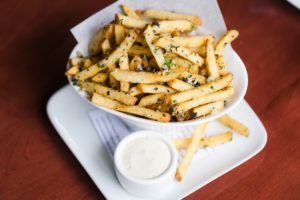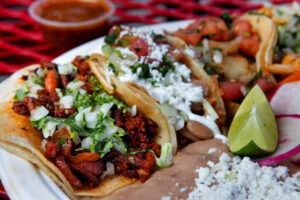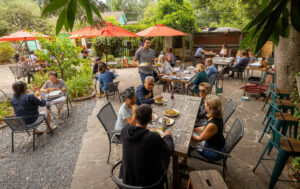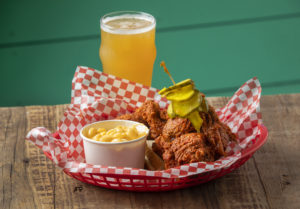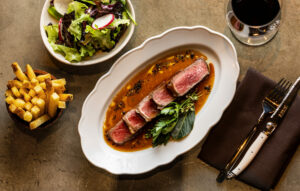
Google “ABC Anything But Chardonnay” and you’ll get something on the order of 19,000 hits in the first few tenths of a second. The oldest reference I could be bothered to find dates to 1995 in a column by Frank Prial for the NY Times, but as recently as 2008, someone actually took the time to write a book with the same dated and misguided tag line, so we know that wine writers, at least, have had the ABC bug up their collective keester for the better part of 15 years now. A cursory review of the literature, such as it is, will tell you that the ABC crowd (or “movement”, as they are wont to call themselves, if they’re feeling more plucky and self-important than usual) represents a backlash against the hegemony of that ubiquitous style of California Chardonnay that assaults the palate in a blitzkrieg of sweet butter, vanilla, and sodden oak.
The ABCers have a valid argument, to a point: Too many California Chardonnays taste too much alike, lacking both individuality and varietal character. I have read, but cannot confirm, a plausible hypothesis that the tsunami of monolithic and uniform Chards washing over the marketplace some years ago was the industry’s natural reaction to Kendall-Jackson selling of hundreds of thousands (millions?) of cases of wine in the 80s and 90s that were made in that particular style. Whatever the roots of its family tree, this style – the oenological equivalent of Marshmallow Fluff – reaches its dubious apogee in Rombauer’s eponymous bottling, which I used to care for, truth be told, but – both to its winemaker’s credit and ultimate failing – now strikes me as inscrutably cloaked in wood and stupefyingly uniform, regardless of the vintage, with an inescapable impression of chewing on a handful of buttered-popcorn Jelly Bellys while licking an oak tree. Maybe that’s harsh, and a bit unfair to the Rombauers (whom, unlike downmarket Marshmallow Wines that spend the tender days of their vinous youth literally soaking in a bath of oak chips, at least produce a product of quality), but one thing the ABC folks got right is that too many Chards taste indistinguishably alike in a not-very-Chardonnay sort of way, and where’s the fun in that?.
What they got wrong, however, is that Chardonnay is somehow ill-suited to oak barrels and malolactic fermentation, and that Americans (or anybody else, for that matter) would stop drinking Chardonnay: In the first instance, not only do the undisputed heavyweight champions of the Chardonnay world – counting amongst their ranks the who’s-your-daddy of all Chardonnays and possibly all dry white wines, Le Montrachet; some of the world’s finest Champagnes (any Tete de Cuvee designated blanc de blanc, including such luminaries as Salon, Taittinger, and Krug’s mythical Clos de Mesnil); and New World “cult” offerings (such as those from John Kongsgaard and Helen Turley) make extensive use of new oak and ML fermentation; and as to the second claim, it’s just plain false. To wit, Americans guzzle 5-10% more California Chardonnay each year than the one previous, and have done so since that very same NYT article appeared in 1995.
So what gives? A winemaker friend of mine once told me, “Americans talk dry, but drink sweet”. He was talking about the oaky, extracted, blue-black ink wells of Cabernet Sauvignon that continue to define most of our neighboring Napa Valley, but I think the song remains the same further west as well, here in the Land of Chard: We, the American palate, like to fill our glasses with big, rich, succulent, gobs of toasty, creamy Chardonnay unctuousness. Decry it all you want, but the sales statistics don’t lie, and I, for one, am proud to hold my hand up as one of the many whom they represent, provided the wines in question reflect their varietal character and a retain a sense of balance between fruit and wood, richness and structure, winemaker and vine because, at the end of the day, these are flirty, sexy, flattering wines, and a well-made, sexpot of a Chard is the sort of wine that will get you lucky.
AV Chardonnay Calls BS on ABC (Part 1 of 3)
Google "ABC Anything But Chardonnay" and you'll get something on the order of 19,000 hits in the first few tenths of a second. The oldest reference I could be bothered to find dates to 1995 in a column by Frank Prial for the NY Times, but as recently as 2008, someone actually took the time to write a book with the same dated and misguided tag line, so


